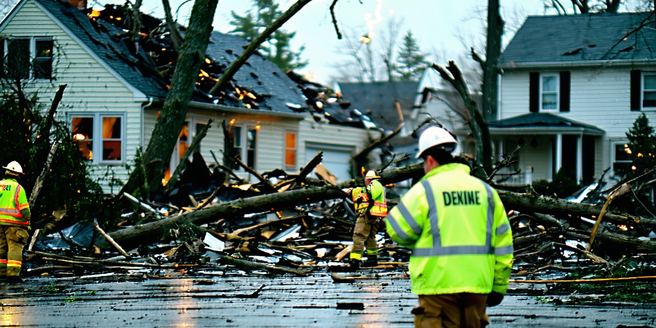Understanding Free Storm Damage Assessment

Importance of Storm Damage Assessment
Storm damage assessment is crucial for various reasons. First, it helps identify the extent of the damage incurred, which is vital for planning repairs and preventing further issues. Proper assessment ensures that no hidden damage is overlooked, which could lead to costly repairs later. It also aids in filing accurate insurance claims, as insurers require a detailed report to process claims efficiently. Furthermore, timely assessments can expedite recovery and restoration efforts, enabling affected homeowners to return to normalcy faster. By understanding the full impact of the storm, communities can better plan for future resilience, ensuring that structures are built to withstand future weather events. It’s a proactive step that safeguards property, finances, and well-being.
What to Expect from a Free Assessment
When scheduling a free storm damage assessment, you can expect a comprehensive evaluation of your property by qualified professionals. These experts will inspect various elements, including roofs, windows, siding, and interiors, to identify both obvious and subtle damage. They’ll document findings meticulously, often employing photos and reports to provide evidence of destruction. The assessment may also involve recommendations for repairs, helping you understand priorities and potential costs involved. A clear communication channel with the service provider ensures that all your concerns are addressed. There should be no obligation to proceed with repairs from the assessing entity, allowing you to make informed, pressure-free decisions. It’s a transparent process that provides peace of mind and clarity after a disruptive event.
How to Find Reliable Assessment Services
Finding reliable storm damage assessment services begins with research. Seek out companies with strong reputations and solid customer reviews. It’s wise to also check their standing with the Better Business Bureau. Verify that the service providers are licensed and insured, indicating professionalism and accountability. It’s beneficial to ask for referrals from friends or neighbors who have experienced similar situations and were satisfied with their assessments. Compare multiple estimates and ensure that potential assessors provide clear, written documentation of their findings. Avoid companies that demand up-front fees for assessments, especially if they promise expedited insurance claims, as this could be a red flag. A trustworthy assessor will offer thorough scrutiny without pressuring you into hiring them for repair services.
Common Types of Storm Damage
Storms can cause a variety of damage to properties. Common types include roof damage, such as missing or broken shingles, which can lead to leaks and further water intrusion. Windows and siding may suffer from cracks or fractures due to flying debris. Flooding can wreak havoc on basements and foundations, weakening structural integrity. Lightning strikes might cause electrical issues or even fires. Wind can uproot trees, causing them to fall on homes or vehicles. In some cases, hailstorms lead to dented siding, damaged roofs, and shattered windows. It’s crucial to address these issues promptly to prevent secondary complications, such as mold growth or further infrastructural degradation, which can significantly impact safety and repair costs.
Next Steps After Assessment Completion
Once a storm damage assessment is complete, the focus should shift to planning and executing the necessary repairs. Use the detailed report to prioritize repairs that prevent further damage, such as roof leaks or structural vulnerabilities. Consult with trusted contractors to obtain estimates and timelines for repairs, ensuring you choose professionals with proper credentials. Timely action can make a significant difference in minimizing further complications. Coordinate with your insurance company to understand coverage and file claims efficiently using the assessment documentation. Consider leveraging any available community resources or relief programs if the repairs are extensive. Finally, assess your preparedness for future storms and consider improvements, such as reinforced structures or emergency plans, to mitigate damage in subsequent events.